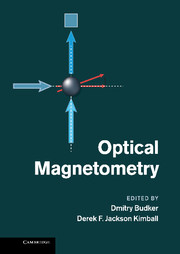18 - Tests of fundamental physics with optical magnetometers
from Part III - Broader impact
Published online by Cambridge University Press: 05 May 2013
Summary
Overview and introduction
At present, we know of four fundamental forces, three of which (electromagnetism, the strong force, and the weak force) are well described by what has come to be known as the Standard Model, a theory developed in the 1960s by Glashow, Weinberg, Salam, and others [1–3]. The fourth, gravity, is well understood at macroscopic scales in terms of Einstein's theory of general relativity [4, 5]. In spite of the spectacular agreement between these theoretical descriptions and numerous experimental measurements, it has been exceedingly challenging to develop a consistent theory of gravitation at the quantum scale, primarily because of the extreme difference between the mass and distance scales at which experimental tests of the two theories are performed. Furthermore, there are a variety of observations that have defied satisfactory explanation within this framework, prominent among them the matter–antimatter asymmetry of the universe [6], evidence for dark matter [7], and the accelerating expansion of the universe, attributed to a mysterious “dark energy” permeating spacetime [8]. It is always of great interest to carry out experiments testing the agreement between theory and experiment beyond the frontier of present precision, and the abundant mysteries confronting our modern understanding of fundamental particles and interactions make the present era an especially auspicious time for the discovery of new physics.
The techniques of optical magnetometry are ideally suited for experimental tests of fundamental physical laws involving atomic spins. For example, a variety of optical magnetometry techniques are being used to search for heretofore undiscovered spin-dependent forces that would indicate the existence of new fundamental interactions.
- Type
- Chapter
- Information
- Optical Magnetometry , pp. 339 - 368Publisher: Cambridge University PressPrint publication year: 2013
- 1
- Cited by

